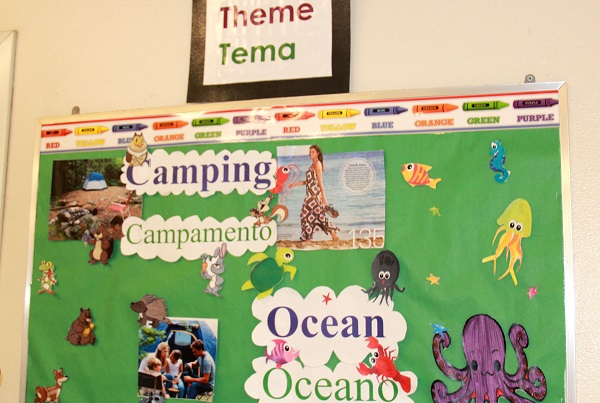Early Essentials Webisode 9: Language Development
Discover more about infant and toddler language development. Hear tips on how to support this development, including for children who are dual language learners.
 These resources offer information and guidance on the needs of children who are acquiring two or more languages at the same time or are learning a second language while developing their first. Besides dual language learner (DLL), other terms that resources may use when referring to these children include bilingual, English language learner (ELL), Limited English Proficient (LEP), English leaner, and children who speak a Language Other Than English (LOTE).
These resources offer information and guidance on the needs of children who are acquiring two or more languages at the same time or are learning a second language while developing their first. Besides dual language learner (DLL), other terms that resources may use when referring to these children include bilingual, English language learner (ELL), Limited English Proficient (LEP), English leaner, and children who speak a Language Other Than English (LOTE).
The Policy Statement on Supporting the Development of Children Who Are Dual Language Learners in Early Childhood Programs provides recommendations to early childhood programs that promote the development and learning of young children who are DLLs. It also provides support for language revitalization efforts within tribal early childhood programs.
Find related DLL program assessment resources.
Discover more about infant and toddler language development. Hear tips on how to support this development, including for children who are dual language learners.
Caregivers and teachers, even when they do not know the home language of children, can use a number of effective strategies throughout the day to support the children’s English language development.
Learn teaching practices to encourage language development in English and home languages for children who are learning more than one language. Practices include having responsive conversations, teaching new vocabulary, and building relationships with parents that support language development.
Use this video to guide reflection and enhance practices that support language development with infants, toddlers, and their families.
Learn how to gather and use the funds of knowledge for children and families in the classroom. This approach will help staff ensure culturally relevant programming.
Find tips classroom staff and home visitors can use when they do not speak the languages of the children in their care.
In order for children to close any achievement gap they may have experienced when they entered Head Start or Early Head Start, programs must have clear systems in place that support high-quality instruction. These resources are designed specifically for program leaders.
Babies are born “citizens of the world.” Children can tell the difference between all the sounds in all the world’s languages at birth.
For an adult, trying to learn a second language can be a difficult task. Young children have a much easier time learning languages than adults. They learn language by having ample opportunities to hear speech from adults and peers.
Children who speak home languages other than English make up at least one third of Head Start enrollment. They speak more than 140 languages and are enrolled in 87 percent of all Head Start programs. All Head Start staff, and policy makers will want to understand what these young dual language learners (DLLs) need in order to thrive in Head Start and beyond. They will also want to know how to support DLL’s development and school readiness skills.